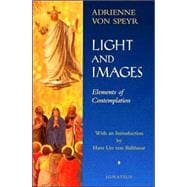
What is included with this book?
Adrienne von Speyr (1902-1967) was a Swiss medical doctor, convert to Catholicism, a mystic, wife and author of over 60 books on spirituality and theology. She collaborated closely with the renowned theologian Hans Urs Von Balthasar, her confessor for 27 years, and they co-founded the Community of Saint John. Her numerous writings, published by Ignatius Press, are recognized by leading theologians and writers as a major contribution to the mystical and spiritual writings of the Church. Among her most important works are Book of All Saints, Confession, The World of Prayer, Handmaid of the Lord, and The Passion from Within.
| Introduction, by Hans Urs von Balthasar | 11 | (122) | |||
|
17 | (14) | |||
|
|||||
|
31 | (8) | |||
|
|||||
|
39 | (10) | |||
|
|||||
|
49 | (12) | |||
|
|||||
|
61 | (16) | |||
|
|||||
|
77 | (14) | |||
|
|||||
|
91 | (16) | |||
|
|||||
|
107 | (12) | |||
|
|||||
|
119 | (14) | |||
|
|||||
| 10. The Lord's Parables | 133 | (10) | |||
|
|||||
| 11. Images of the Trinity | 143 | ||||
|
The New copy of this book will include any supplemental materials advertised. Please check the title of the book to determine if it should include any access cards, study guides, lab manuals, CDs, etc.
The Used, Rental and eBook copies of this book are not guaranteed to include any supplemental materials. Typically, only the book itself is included. This is true even if the title states it includes any access cards, study guides, lab manuals, CDs, etc.